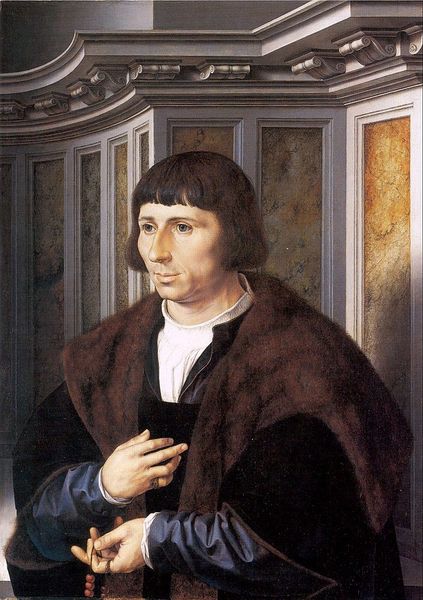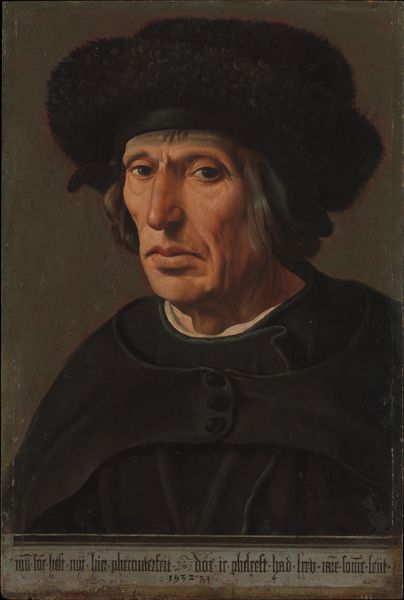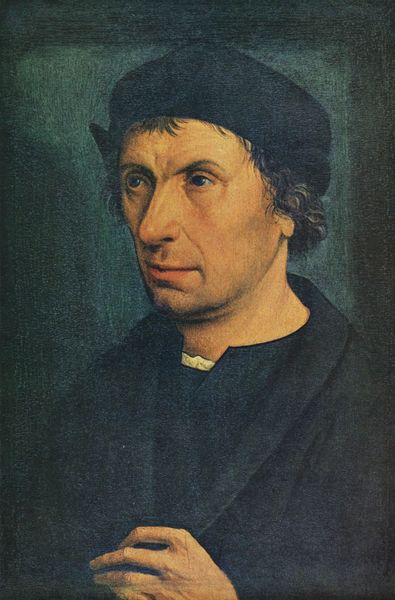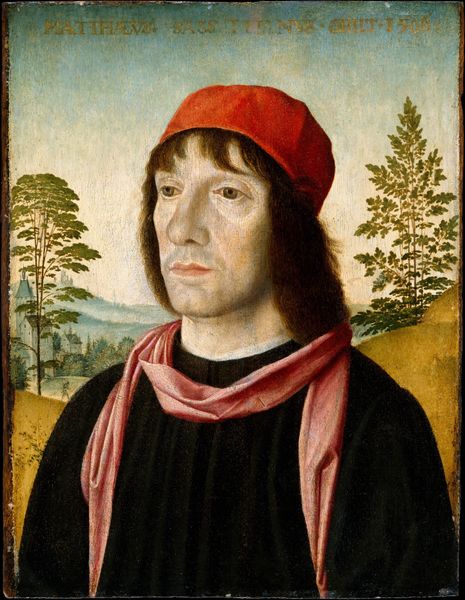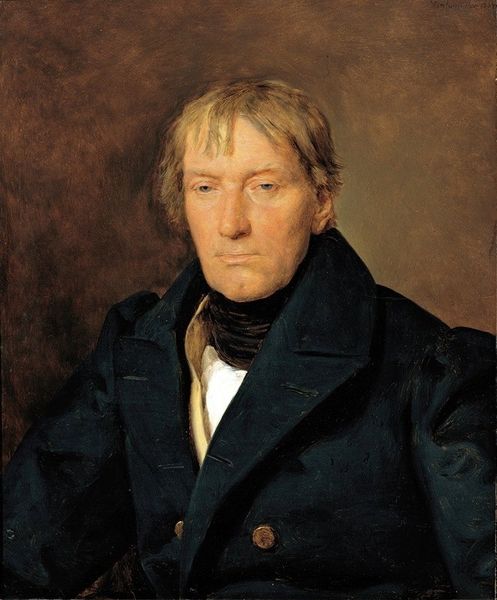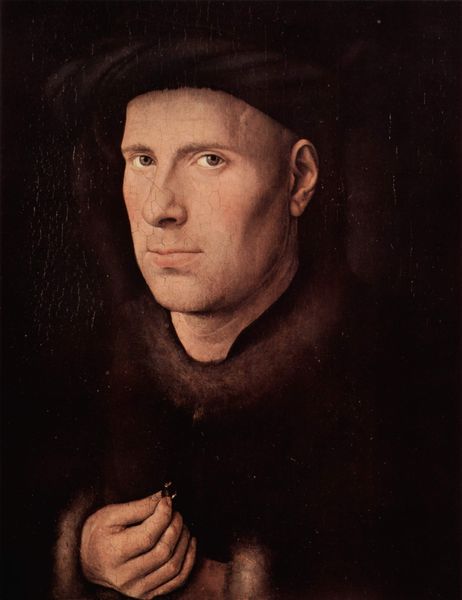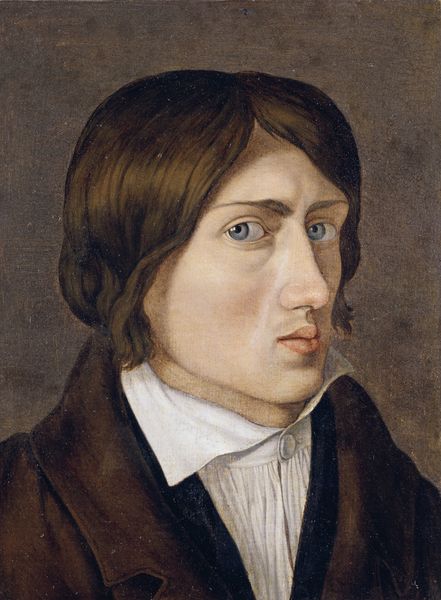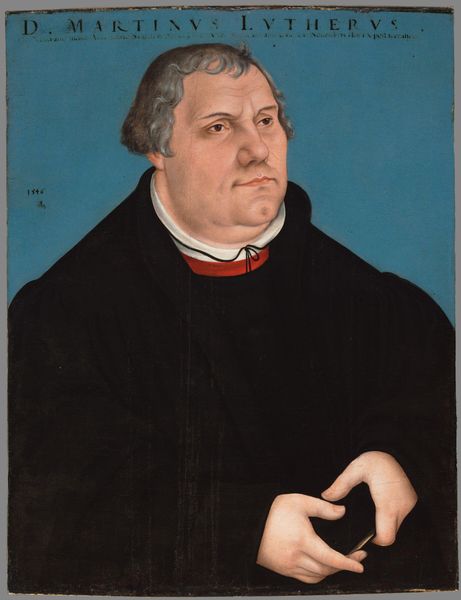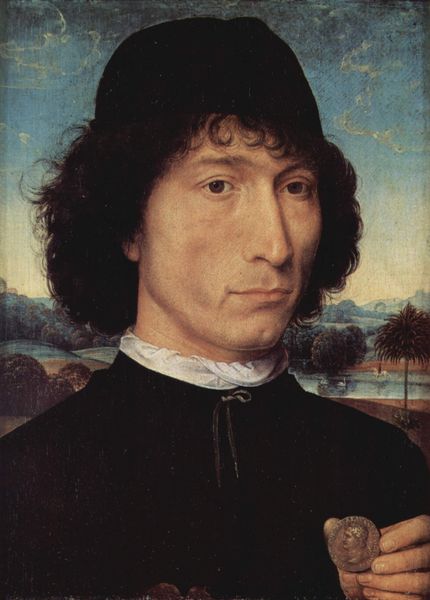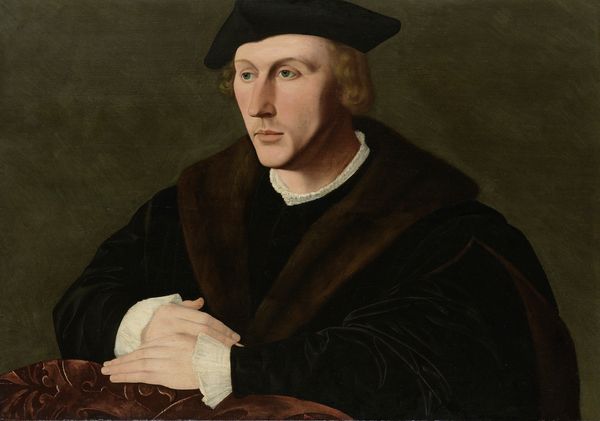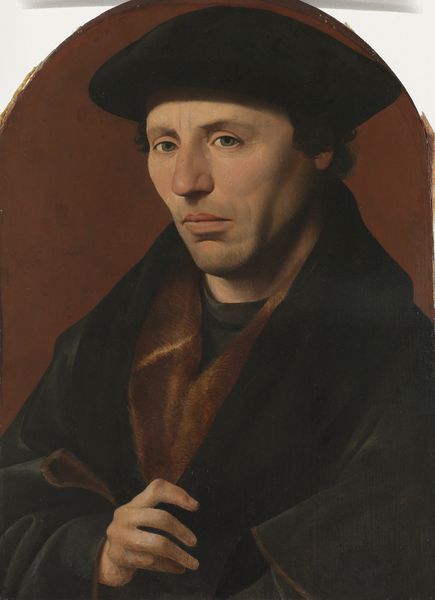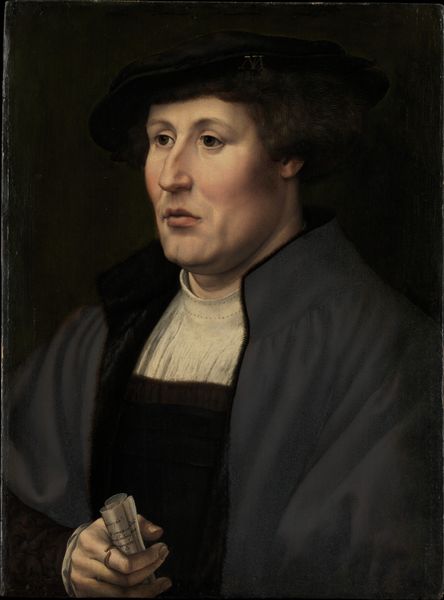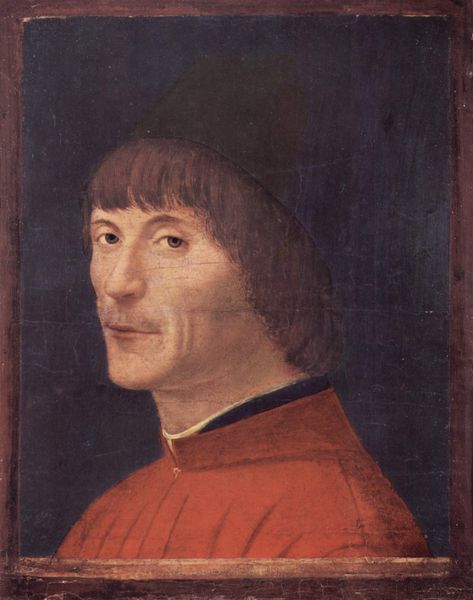
oil
#
portrait
#
portrait
#
oil
#
portrait subject
#
11_renaissance
#
portrait reference
#
portrait head and shoulder
#
animal portrait
#
13_16th-century
#
facial portrait
#
portrait art
#
fine art portrait
#
celebrity portrait
#
digital portrait
Dimensions: 31.9 x 26.4 x 0.4 cm
Copyright: Public Domain
Curator: So, here we have Jan van Scorel's "Portrait of a Man," painted around 1530. It's oil on panel, and it's currently hanging in the Städel Museum. Editor: The direct gaze and the somewhat severe haircut really strike me. He seems like a man of importance, but I wonder, what story does this portrait tell us about the sitter and society at the time? Curator: Exactly. The painting presents us with an image of a man of status during the Renaissance, a period where humanist values were on the rise, and with that, there was growing patronage in artistic and intellectual endeavors. Look closely at the text in the background. What do you make of it? Editor: It seems faded, like a hidden message. Was it common to include text within portraits, and what purpose might it serve? Curator: Yes, sometimes these portraits contain the sitter's name and age but this inscription remains largely illegible. Including details such as that suggested education and erudition were highly valued at this point, signaling the sitter's intellectual standing. Editor: So, the inclusion of illegible text suggests education as much as actual literacy mattered to the sitter? It's a branding excercise! Curator: Precisely. The function of portraiture here, therefore, operates on various socio-political levels. It's not simply a likeness; it's an assertion of social position, reflecting the aspirations and values of the emerging elite during the Renaissance. Editor: This gives me so much to think about! The portrait becomes a symbol of larger shifts in society. Curator: Indeed. Analyzing art through the lens of social and institutional forces helps us unravel those complex layers. I’m glad we had this conversation.
Comments
No comments
Be the first to comment and join the conversation on the ultimate creative platform.
